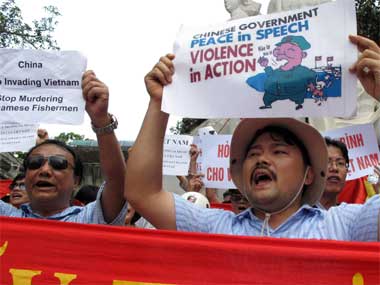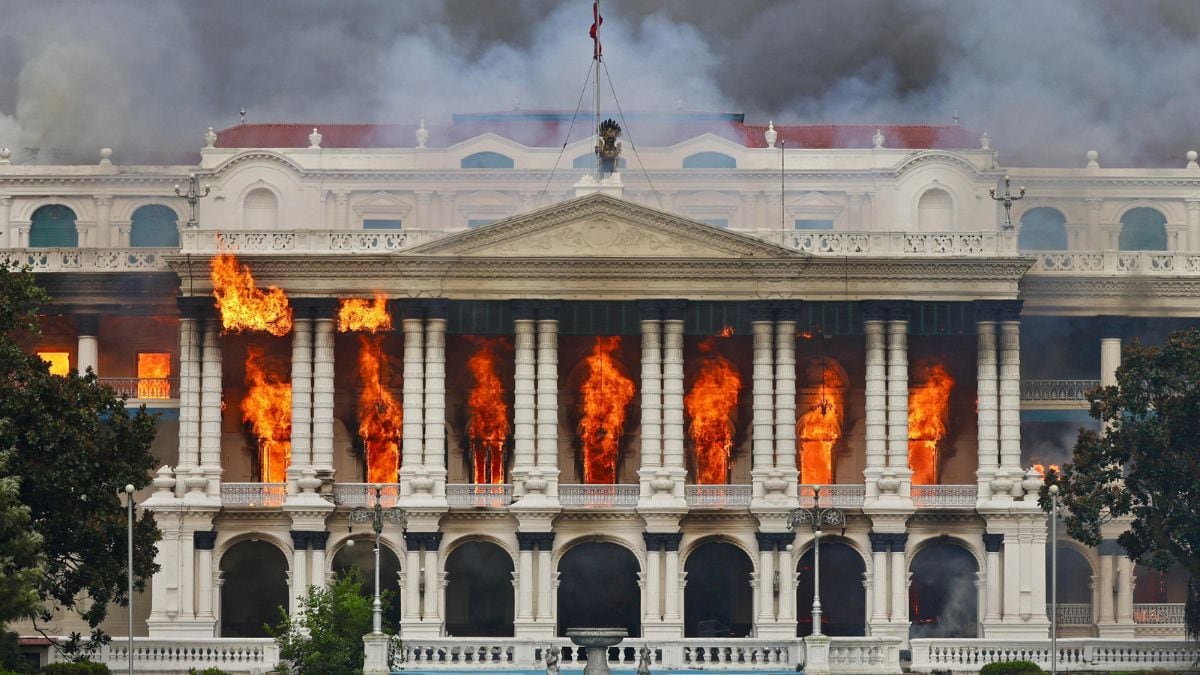By DS Rajan China and Vietnam are locked in an intense competition in claiming sovereignty over two disputed South China Sea island chains, the Paracels (Xisha in Chinese, Hoangsa in Vietnamese) and the Spratlys (Nansha in Chinese, Truongsa in Vietnamese). Beijing claims a vast sea area stretching from Hainan, its southern most province, as belonging to it historically; Hanoi argues that the two chains have been Vietnamese territory since the 17th century. As far as is known, China has a presence now in nine locations in the Spratlys, and Vietnam in 29. Other regional powers too are involved in the dispute: the Philippines says the two chains are its territories on the basis of their geographical proximity to it; Malaysia and Brunei too claim that the territories fall under their respective Exclusive Economic Zones (EEZ) as defined by the UN Convention of the Law of the Sea. The South China Sea region has enormous strategic significance, and current estimates confirm vast reserves of natural resources there: about 25 million metric tonnes of crude oil and about 25 trillion cubic meters of natural gas. The region is also home to important shipping lanes. As Chinese analysts see it, to defend its strategic interests in the South China Sea, China may have to deal with two “unfavourable” factors: first, China has control over only a small number of disputed islands and lacks channels that connect to the ocean; second, the country does not have a formidable Navy to protect its maritime interests. For them, the remedy may lie in China’s ability to transform itself ‘from a continental power to a maritime power’ (Gong Jianhua, China Daily, June 8). China bides its time Given such an assessment, China may decide it needs more time to turn naval power conditions in its favour and therefore wait before taking any assertive action on the islands issue. Finding a ‘final solution’ to the issue may take a long time. Until then, the South China Sea is expected to continue a regional flashpoint. Clashes between China and Vietnam over the Paracels and the Spratlys are not new. In 1974, the two fought in the Paracels, and China captured some territories. China then launched a war against Vietnam in 1979 to “teach Vietnam a lesson”, and occasional conflicts between them have taken place. The 1990s saw no major confrontation between the two; China was then looking for a political approach towards the dispute; the then Chinese Prime Minister Li Peng proposed in 1990 that the territorial issue be put aside to enable the two sides to go in for ‘joint development’. Two years later, however, China passed its “Law on Territorial Waters and Adjacent Areas” which reiterated its claim over the Paracels and Spratlys. In 2002, Beijing signed the “Declaration on the Conduct of Parties in South China Sea” , which was considered a major diplomatic move. However minor clashes still occurred; in April and July 2007, Chinese patrol boats captured some Vietnamese fishermen and boats operating close to the Spratlys. The latest incident in the Spratlys took place on 26 May 2011, when a Chinese fishing boat, escorted by two Chinese patrol vessels, rammed into and disabled the cables of a Vietnamese seismic survey ship owned by ‘Petro Vietnam’. [caption id=“attachment_29550” align=“alignleft” width=“380” caption=“Protesters hold placards during an anti-China demonstration in Hanoi. Reuters”]  [/caption] Hanoi called it a ‘deliberate’ Chinese violation of Vietnam’s territorial sovereignty. China, on its part, alleged that the Vietnamese ship was illegally exploring in an area under Chinese sovereignty. Following that incident, anti-China demonstrations took place in Hanoi. Matters escalated when both sides held “live fire drills”, raising the risk of an escalation of the conflict. But whereas Vietnam appeared to act with caution, China’s exercise appeared intended to signal a bigger show of strength. But why now? There are four compelling reasons for China’s show of force against Vietnam this year. First, Vietnam’s defence budget, presented in January 2011, went up by 70% to $2.6 billion. Second, Hanoi issued a decree on June 13 listing the categories of citizens that would be exempt from military service in times of war, which signalled a preparedness for war. Third, Vietnam’s renewed activism in exploring oil and gas in the disputed area posed a challenge. And fourth, there was a perceptible escalation in attempts by Vietnam and the US to ‘internationalise’ the South China Sea issue. However, in recent years, political and economic ties between China and Vietnam visibly improved. Following up on exchanges of visits, senior political advisers of the two nations discussed matters on bilateral cooperation at Beijing – even up until June 10. So, why did the current clash come about? Beijing evidently utilised the clash to reassert its claims over the Spratlys; the ‘reassertion’ at this juncture is linked to China’s current ‘core interests’ concept, which does not provide for compromises — and even permits use of force. In fact, the ‘core interest’ concept has now come to override every other Chinese diplomatic principle governing territorial issues (although there’s some disagreement about whether China expressly referred to the South China Sea as being one of its ‘core interests’). Lessons for India What lesson can India learn from the latest China-Vietnam clash? First, it’s worth bearing in mind that China’s ‘core interests’ concept can also influence Beijing’s conduct with respect to the Sino-Indian border issue (although it has not so far been included by China in the ‘core interests’ list). Second, India should take note of the contradiction between China’s declaration — that it will not use force — and its actions. The contradiction was also visible in the case of China’s approach towards Japan on the Senkakus issue. Is it possible that China, which in theory stands for peaceful dialogue on the Sino-Indian boundary issue, could carry out limited, offensive border actions against India? New Delhi should ponder over this question, especially in light of the frequent “Chinese intrusions” across the Indian border. For now, with Vietnam, China abides by the diplomatic formulation of “shelving the disputes and seeking common development”. But as and when China becomes a ‘maritime’ power, it may have no need to ‘shelve’ issues. Similarly with India, Beijing is in favour of ‘shelving’ the ‘difficult’ border issue and improving ties in other areas. But will China become assertive with India once its defence modernisation programme is complete, perhaps by the middle of this century? Additionally, the US factor has emerged as an irritant for China in dealing with the South China Sea issue with Vietnam. Similarly with India, China is wary of a “Washington-New Delhi collusion” to strategically ‘encircle’ China. New Delhi should therefore handle the US-China-India triangular relations with finesse. Lastly, New Delhi should look closely at the implications of China’s aim to become a “maritime power” for the situation in the Indian Ocean, a region of strategic importance to India. DS Rajan is Director of Chennai Centre for China Studies. Republished with permission from the Chennai Centre for China Studies.
China’s territorial claims in the South China Sea, and the way it addresses them, hold important pointers for India’s dealings with China. Here’s why…
Advertisement
End of Article
Written by FP Archives
see more


)

)
)
)
)
)
)
)
)



